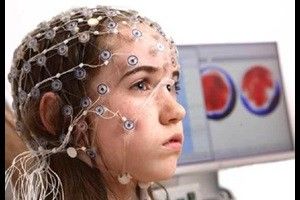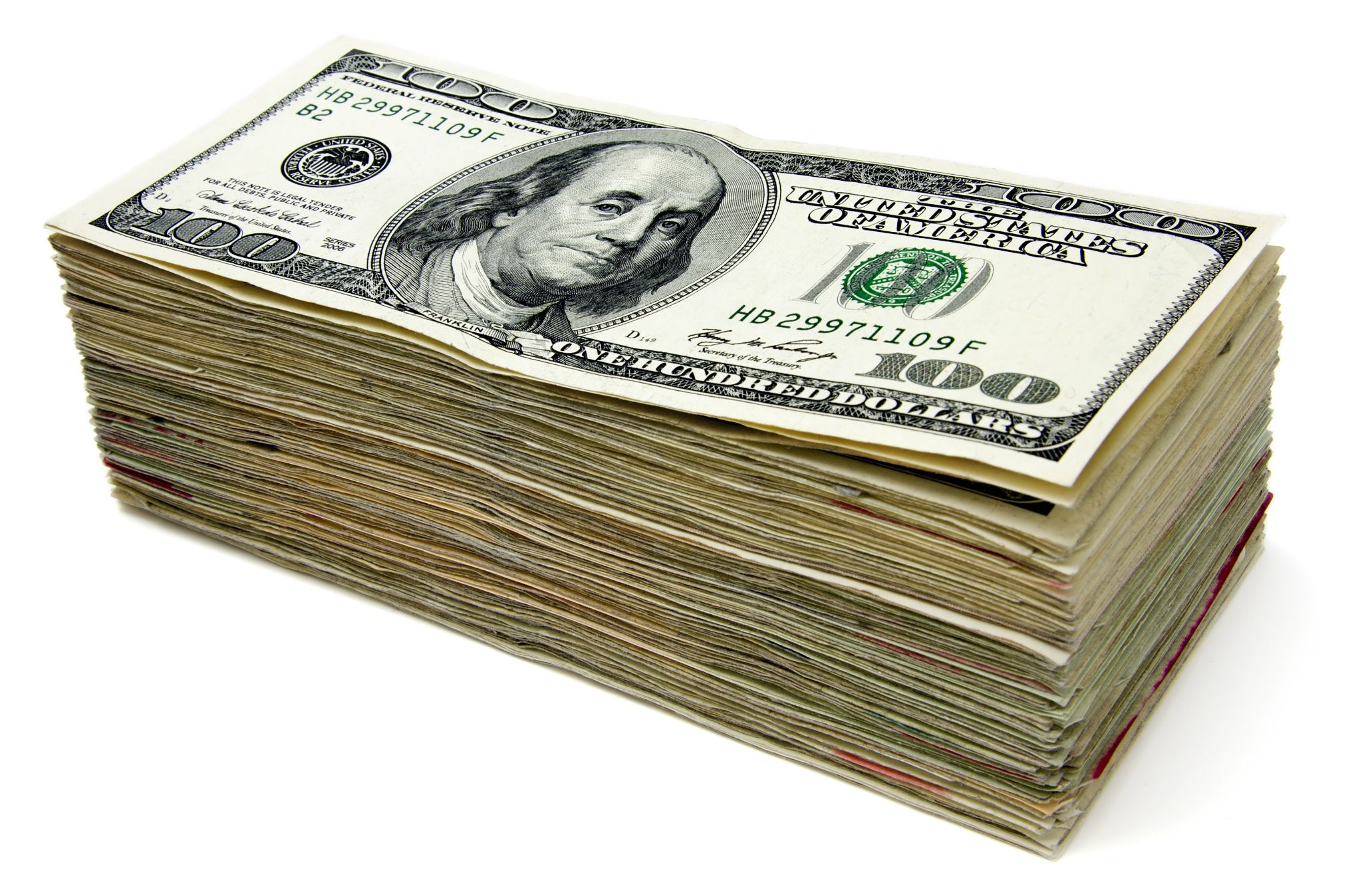“What is the best way to study the brain? Big labs or small?”



Controlling the brain, consciousness and the unconscious through artificial means has long been a staple plot of science fiction. Yet history has a way of proving the fictional to end up as possible, and the future of brain-machine interface appears to hold greater promise than ever before.
Image Credit: Society for Neuroscience (SFN)According to Neuroscience Researcher, Yale University Fellow, and the Director of Yale’s Clinical Neuroscience Imaging Center, Dr. Hal Blumenfeld, we can now therapeutically (and safely) go inside the brain. As he reflected on the recent advances in neuroscience, Blumenfeld cited the progress that’s been made in the last decade in understanding the relationship between brain activity and conscious thought as one of the biggest breakthroughs. The ability to find the switch in the brain that regulates consciousness, and turn it on and off, is a major step toward the treatment of epilepsy, brain injuries and more, and could have a profound effect on mankind, he said.
“I think the exciting advances are really looking in the network approach to understanding the brain, looking at the brain as a network, and understanding that, for something as wide reaching as consciousness to happen, you really need the whole brain network or most of the brain,” Blumenfeld said. “There’s a switch deep in the middle of the brain that can either be turned on or off. When that gets turned on, the whole rest of the brain network, including the cortex, all start to interact and create consciousness. When that switch gets flipped off, consciousness is turned down and we lose consciousness.”
While it sounds like a simple on/off operation, Blumenfeld noted that it’s not a smooth, linear process and that the different states of consciousness are subject to big jumps and rapid changes in the transition. Where researchers have made the biggest leaps, he said, is in gaining an understanding of those transitions and interactions throughout the entire network of the brain and how they regulate the level of arousal, attention and awareness.
Going forward, these breakthroughs could have a major effect in managing epileptic seizures, Blumenfeld said. While an epileptic seizure usually only affects one part of the brain, the seizure itself also flips that consciousness on/off switch to off. Avoiding that loss of consciousness during a seizure, he said, can also make the effects of the seizure milder and by extension, help improve the quality of life for those who suffer from epilepsy.
“The technology for deep brain stimulation has progressed fantastically in recent years, and it’s already being done for movement disorders, epilepsy and for chronic pain. (We have the technology to) safely implant in people’s brains a stimulator, like a pacemaker or a defibrillator, that detects when a seizure is happening and starts a stimulus,” Blumenfeld said. “Medicines and deep brain stimulation are not going to cure everyone of their seizures but, what this tells us is, there is another whole strategy we can take. Even if we can’t stop the seizures, if we can flip that switch back on so people will regain their consciousness during and after the seizure, they’ll be much better off.”
Beyond epilepsy, these new approaches in treatment can also be applied to those in a coma, those in a chronic vegetative state, and other disorders of consciousness, Blumenfeld said. These aren’t the only maladies being researched for brain stimulation. The use of optogenetics is also currently being studied for use in therapy and other brain disorders, he added. Ed Boyden and the Synthetic Neurobiology Group at MIT are hard at work in this domain of research.
“I think optogenetics is tremendously exciting and will continue to grow. There are a lot of challenges to implementing it in humans and safely carrying it out, but the promise is there,” Blumenfeld said. “It has a much more selective mode of action with individual neurons and I believe that eventually, we’ll be able to use that too (in our research). It will just take a bit more time until we get to that point.”
Looking forward, Blumenfeld noted that the potential future applications of BMI and brain stimulation could one day expand to attention disorders and even the modulation of human emotion. However, owing to the ethical questions that will certainly arise, he feels a priority should remain on developing further treatments or therapies for those who need it the most.
“First and foremost, we’ve got to look at the benefits we’re talking about, for people who are really suffering and really have tremendously impacted quality of life because of unpredictable-at-any-time-losing consciousness due to seizure, not being able to drive or, worse, people who are in a vegetative state. I think these are very promising therapies,” Blumenfeld said. “While scientists and human beings always have to consider the implications of them being used inappropriately, I think that doesn’t diminish from the importance of moving forward and developing these treatments so that they can be used for the people who need them the most.”

“The detector could help to clear up some mysteries. In 2013, the AMS announced it had seen hints of dark matter but so far it has detected too few high-energy particles to say for sure. Though DAMPE lacks the equipment to resolve the conundrum directly, it could reveal if the signal is caused by a different astrophysical source, such as pulsars, says Capell.
Although it will collect fewer incoming photons, DAMPE is better at pinpointing their energy than are existing γ-ray telescopes, such as NASA’s Fermi-LAT, says Miguel Sanchez-Conde, a physicist at the Oskar Klein Centre for Cosmoparticle Physics in Stockholm. This capability should allow DAMPE to see sharp spikes in radiation predicted by some dark-matter models.”

Economist Carlota Perez talk about the future of ICT.

In spite of the popular perception of the state of artificial intelligence, technology has yet to create a robot with the same instincts and adaptability as a human. While humans are born with some natural instincts that have evolved over millions of years, Neuroscientist and Artificial Intelligence Expert Dr. Danko Nikolic believes these same tendencies can be instilled in a robot.
“Our biological children are born with a set of knowledge. They know where to learn, they know where to pay attention. Robots simply can not do that,” Nikolic said. “The problem is you can not program it. There’s a trick we can use called AI Kindergarten. Then we can basically interact with this robot kind of like we do with children in kindergarten, but then make robots learn one level lower, at the level of something called machine genome.”
Programming that machine genome would require all of the innate human knowledge that’s evolved over thousands of years, Nikolic said. Lacking that ability, he said researchers are starting from scratch. While this form of artificial intelligence is still in its embryonic state, it does have some evolutionary advantages that humans didn’t have.
“By using AI Kindergarten, we don’t have to repeat the evolution exactly the way evolution has done it,” Nikolic said. “This experiment has been done already and the knowledge is already stored in our genes, so we can accelerate tremendously. We can skip millions of failed experiments where evolution has failed already.”
Rather than jumping into logic or facial recognition, researchers must still begin with simple things, like basic reflexes and build on top of that, Nikolic said. From there, we can only hope to come close to the intelligence of an insect or small bird.
“I think we can develop robots that would be very much biological, like robots, and they would behave as some kind of lower level intelligence animal, like a cockroach or lesser intelligent birds,” he said. “(The robots) would behave the way (animals) do and they would solve problems the way they do. It would have the flexibility and adaptability that they have and that’s much, much more than what we have today.”
As that machine genome continues to evolve, Nikolic compared the potential manipulation of that genome to the selective breeding that ultimately evolved ferocious wolves into friendly dogs. The results of robotic evolution will be equally benign, and he believes, any attempts to develop so-called “killer robots” won’t happen overnight. Just as it takes roughly 20 years for a child to fully develop into an adult, Nikolic sees an equally long process for artificial intelligence to evolve.
Nikolic cited similar attempts in the past where the manipulation of the genome of biological systems produced a very benign result. Further, he doesn’t foresee researchers creating something dangerous, and given his theory that AI could develops from a core genome, then it would be next to impossible to change the genome of a machine or of a biological system by just changing a few parts.
Going forward, Nikolic still sees a need for caution. Building some form of malevolent artificial intelligence is possible, he said, but the degree of difficulty still makes it unlikely.
“We can not change the genome of machine or human simply by changing a few parts and then having the thing work as we want. Making it mean is much more difficult than developing a nuclear weapon,” Nikolic said. “I think we have things to watch out for, and there should be regulation, but I don’t think this is a place for some major fear… there is no big risk. What we will end up with, I believe, will be a very friendly AI that will care for humans and serve humans and that’s all we will ever use.”
With modern innovations such as artificial intelligence, virtual reality, wi-fi, tablet computing and more, it’s easy for man to look around and say that the human brain is a complex and well-evolved organ. But according to Author, Neuroscientist and Psychologist Gary Marcus, the human mind is actually constructed somewhat haphazardly, and there is still plenty of room for improvement.
“I called my book Kluge, which is an old engineer’s word for a clumsy solution. Think of MacGyver kind of duct tape and rubber bands,” Marcus said. “The thesis of that book is that the human mind is a kluge. I was thinking in terms of how this relates to evolutionary psychology and how our minds have been shaped by evolution.”
Marcus argued that evolution is not perfect, but instead it makes “local maxima,” which are good, but not necessarily the best possible solutions. As a parallel example, he cites the human spine, which allows us to stand upright; however, since it isn’t very well engineered, it also gives us back pain.
“You can imagine a better solution with three legs or branches that would distribute the load better, but we have this lousy solution where our spines are basically like a flag pole supporting 70 percent of our body weight,” Marcus said.
“The reason for that is we’re evolved from tetrapods, which have four limbs and distribute their weight horizontally like a picnic table. As we moved upright, we took what was closest in evolutionary space, which is what took the fewest number of genes in order to give us this new kind of system of standing upright. But it’s not what you would have if you designed it from scratch.”
While Marcus’ book talked about the typical notion in evolutionary psychology that we have evolved to the optimal, he also noted that the human mind works as a function of two pathways, both the optimal performance and our brains’ history. To that end, he sees evolution as a probabilistic process of genes that are nearby, which aren’t necessarily those that are best for a given solution.
“A lot of the book was actually about our memories. The argument I made was that, if you really want a system of brain that does the thing humans do, you would want a kind of memory system that we find in computers, which is called location addressable memory,” Marcus explained.
“With location addressable memory, I’m going to store something in location seven or location eight or nine, and then you’re guaranteed to be able to go back to that thing you want when you want it, which is why computer memory is reliable. Our memory is not even remotely reliable. I can forget what I was going to say or forget where I parked my car. Our memories are nothing even close to the theoretical optimum that a computer shows us.”
Enhancing our minds, and our memories, won’t happen overnight, Marcus said. One might have a “brain like a computer” in theory, but he believes a more evolved, computer-like human brain is thousands of years away.
“There is what I call ‘evolutionary inertia’ that says once something is in place, it’s very hard for evolution to change it. If you change one or two genes, you might have an organism that survives. If you change several hundred, most likely, things are gonna’ break.”
In other words, evolution is the ultimate resourceful engine. Most evolutionary changes are small, since the brain tends to tweak the existing parts rather than start from scratch, which would be a more costly and rather inefficient solution in a survival-of-the-fittest-type world.
Given that genetic science hasn’t worked through a way to rewire the human brain, Marcus poses that better solution toward cognitive enhancement might be found in implants. Rather than generations from now, he believes that advancement could happen in our lifetimes.
“There are now actual cognitive enhancements, if you count motor control substitutes. Neural prostheses are here in limited ways. We know roughly how to make them. There’s a lot of fine detail that needs to be sorted,” Marcus said. “We certainly know how to write computer programs that can translate between interfaces. The big limiting step in improving our memory or enhancing our memory is, we just don’t really understand how information is stored in the brain. I think (a solution for that) is a 50-year project. It’s certainly not a 50,000 year project.”

“Should astronomers be allowed to build the TMT on Mauna Kea? This question raises concerns that we, as practising astronomers, see as a reoccurring issue within the scientific community.”